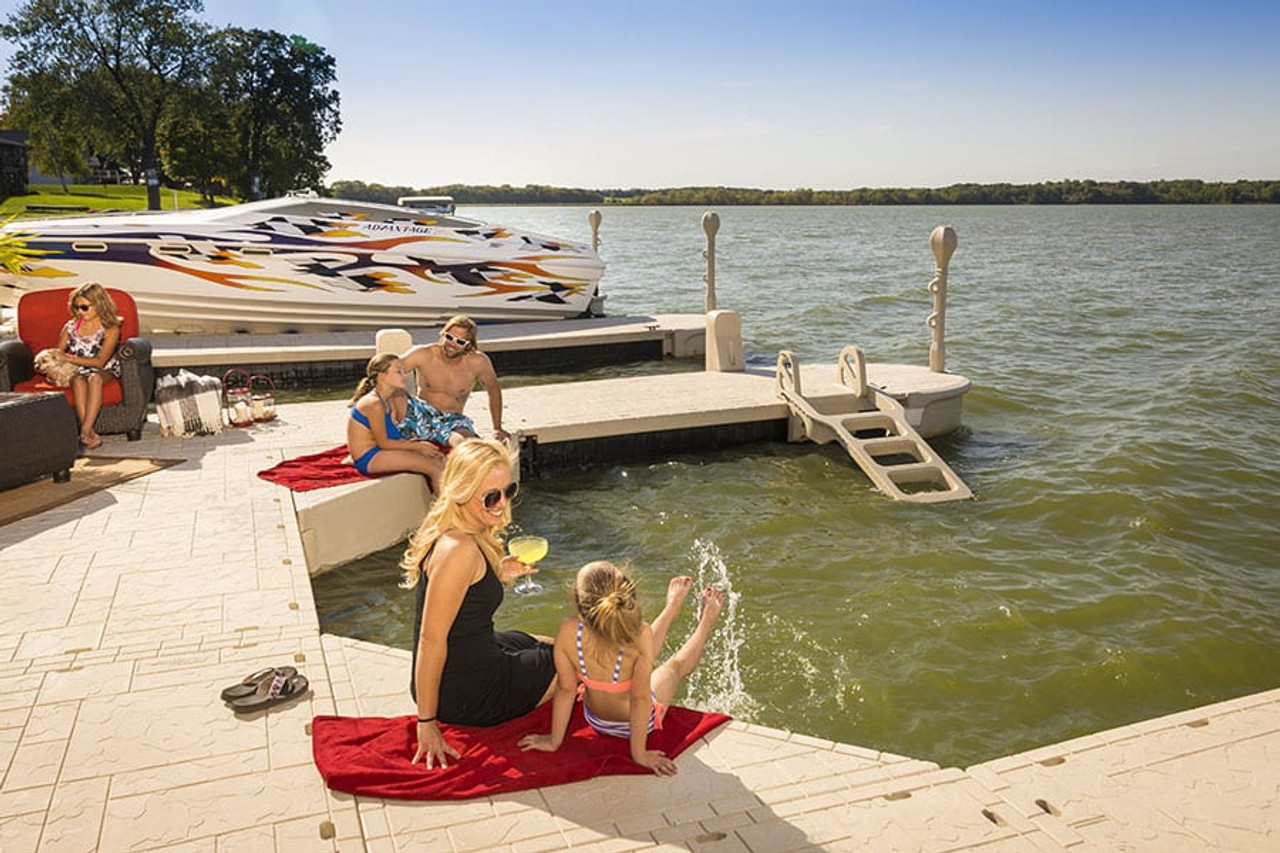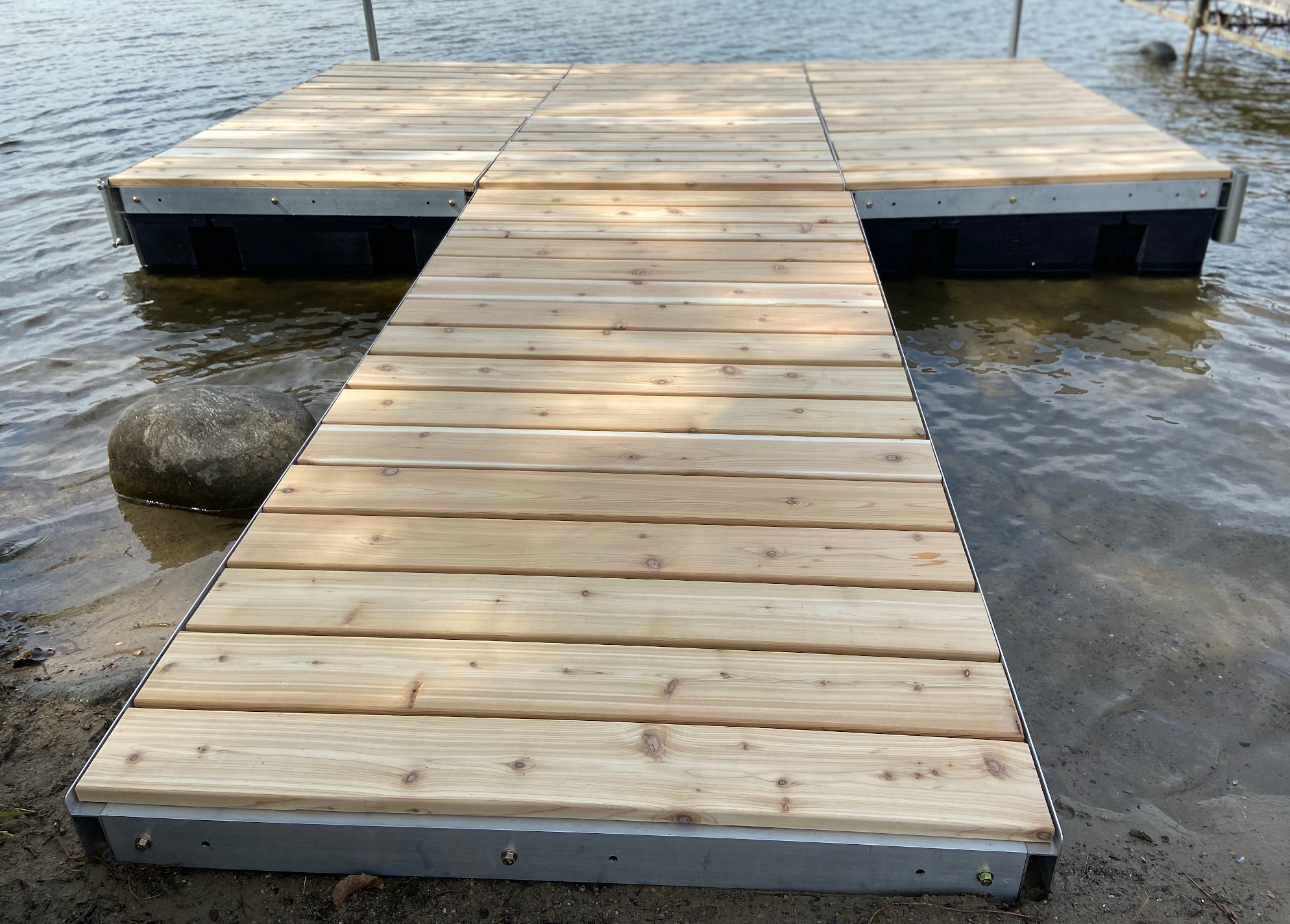Maximizing Your Outdoor Area with Specialized Floating Dock Solutions
Maximizing Your Outdoor Area with Specialized Floating Dock Solutions
Blog Article
Create the Perfect Docking Option With Floating Docks
Floating docks present a versatile option for a variety of maritime needs, adjusting seamlessly to changing water levels and varied vessel kinds. Their modular nature enables for rapid installment and moving, yet the selection of suitable materials and style features is vital for ensuring both functionality and visual charm. As we explore the vital elements that add to the efficiency of floating docks, several vital variables pertaining to stability and upkeep will certainly emerge, elevating questions concerning exactly how to maximize your docking experience. The succeeding discussion will certainly light up these crucial factors to consider.

Benefits of Floating Docks
Floating docks deal various benefits that make them a suitable choice for various maritime applications. Among the primary advantages is their adaptability to changing water degrees. Unlike fixed docks, floating docks increase and loss with the tide, guaranteeing regular access for vessels. This feature is especially essential in locations vulnerable to significant tidal fluctuations or seasonal water level changes.
In addition, floating docks are normally simpler and quicker to set up compared to standard set frameworks. Their modular style allows for simple assembly and disassembly, facilitating upkeep and relocation when necessary. This versatility is particularly useful for momentary applications or in settings where problems may alter.
Floating docks also tend to be much more eco-friendly, as they minimize interruption to the seabed and surrounding water environments. Their resilient nature lowers the risk of damage to aquatic life, advertising a much healthier environment. Furthermore, these docks can be tailored to suit various vessel dimensions, ensuring that they fulfill details functional demands - floating dock company.
Eventually, the mix of versatility, simplicity of installation, and environmental factors to consider makes floating docks a highly effective solution for a large range of maritime demands.
Picking the Right Products
Selecting the appropriate products for floating docks is vital to ensure security, durability, and longevity. The option of products straight influences the dock's efficiency in different environmental conditions, including exposure to water, sunlight, and potential wear from marine web traffic.
Typical products made use of for floating docks include aluminum, timber, and high-density polyethylene (HDPE) Light weight aluminum is light-weight, corrosion-resistant, and needs very little maintenance, making it an exceptional option for durability. Nevertheless, its preliminary expense can be greater compared to other materials.
Timber, while visually attractive and offering a conventional look, can be susceptible to rot and pest damages if not correctly treated. For that reason, using pressure-treated timber or normally long lasting species like cedar or redwood can mitigate these concerns.
HDPE is a popular selection because of its resistance to UV rays and chemicals, along with being eco pleasant. floating docks. It is light-weight and available in different shades, permitting for modification
Eventually, the appropriate material selection will rely on particular needs, including budget plan, desired visual appeals, and ecological considerations. Cautious analysis of these elements will certainly lead to a successful and resistant floating dock solution.
Design Factors To Consider for Security
When developing floating docks, making sure security is a fundamental aspect that can substantially affect their performance and safety and security. Stability in floating dock style is affected by numerous factors, including you can look here buoyancy, weight distribution, and the plan of parts. An optimum buoyancy system should use products that give sufficient lift while lessening weight. This equilibrium makes certain that the dock remains above water, even under varying tons.
Weight circulation is critical; equally dispersing tons throughout the dock protects against turning and improves stability. Larger designs can supply increased stability, specifically in harsh water problems, while longer docks may require additional assistances to stop sagging.
Another crucial consideration is the environmental influence, consisting of wave action and wind. Incorporating attributes such as sidewalls or skirting can aid mitigate the effects of environmental pressures, keeping security in damaging problems. Eventually, a combination of thoughtful style, material choice, and understanding of environmental aspects will produce a floating dock that satisfies both stability and security requirements.
Setup Tips and Techniques

Next, secure the necessary permits and abide by neighborhood laws, which might determine setup techniques and ecological considerations. If required, involve a certified professional experienced in floating dock installations. Usage top notch materials created for aquatic atmospheres to enhance resilience and longevity.
When placing the dock, align it parallel to the coastline to assist in easy access. Make certain that the anchoring system is robust, employing cinder block or helical anchors to maintain the dock against wind and wave action. It's crucial to make up seasonal water level fluctuations, consisting of prospective ice activity in chillier environments.
During the installation, ascertain the dock's floatation and stability prior to settling the anchoring. On a regular basis examine the installment for any type of indicators of wear or damages. By following these tips and strategies, you can accomplish a protected, useful, and visually pleasing floating dock installment that meets your requirements.
Upkeep and Care Guidelines
Caring and keeping for floating docks is vital to prolonging their life expectancy and making certain safe use. Routine examinations click for more info should be conducted to determine any type of indications of wear, damages, or aquatic development. Seek splits, loose fittings, or tarnished areas on the dock's surface area, More Help as these issues can compromise structural stability.
Cleaning up is essential. Use a pressure washer to remove algae, barnacles, and debris, which can accumulate in time. For stubborn growth, think about eco pleasant cleaner that won't hurt aquatic life.
Furthermore, inspect the mooring lines and anchors often to ensure they are complimentary and safe from deterioration. Change any type of frayed or damaged lines promptly to keep security.
During extreme climate, such as tornados or freezing conditions, take precautionary actions. Safeguard the dock with extra mooring lines and, if possible, remove any kind of removable elements to stop damages.
Verdict
To conclude, the implementation of floating docks provides a efficient and versatile docking remedy appropriate for numerous maritime applications. Their adaptability to fluctuating water degrees, combined with a modular design, enables easy customization and moving. Selecting ideal materials enhances both resilience and visual appeal, while mindful consideration of security guarantees safety and security and durability. With proper setup and regular upkeep, floating docks can give trusted and efficient docking experiences for a variety of vessels.
As we explore the crucial elements that contribute to the efficiency of floating docks, several essential variables concerning stability and upkeep will certainly arise, raising questions regarding exactly how to maximize your docking experience. Unlike dealt with docks, floating docks rise and autumn with the tide, making certain regular availability for vessels.When creating floating docks, making certain security is a basic facet that can significantly affect their functionality and security. Stability in floating dock design is affected by various elements, including buoyancy, weight distribution, and the plan of parts. Inevitably, a combination of thoughtful design, material selection, and understanding of environmental factors will generate a drifting dock that fulfills both security and safety and security requirements.
Report this page